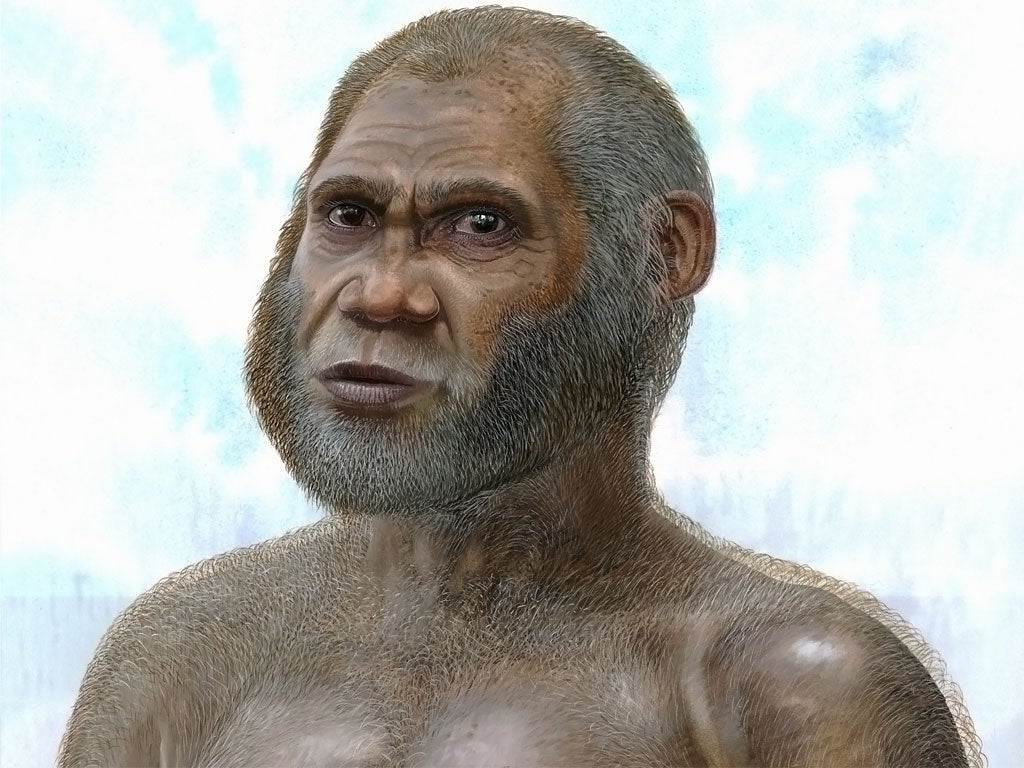Deer relative, red herring or missing link to humans?
Bones found in China have led scientists to suggest a new species of humanoid. By Steve Connor

A distinct group of prehistoric people – who lived in what is now south-west China more than 11,500 years ago – could be a new human species, say scientists.
The anatomy of what have been called the "red deer cave people" is so unique that they were either a very ancient tribe of Homo sapiens that had become isolated for tens of thousands of years, or a completely new species.
A new species would add a further complication to the already complex story of human origins. It would mean our own species, Homo sapiens, shared the same non-African landscapes at the same time with at least four other human species until each became extinct, allowing just one type of human to dominate the globe.
Charred bones suggest the people hunted and cooked an extinct ice-age species of giant deer that lived in Yunnan province in southern China.
The remains of at least four individuals were excavated from two cave sites, one near the city of Mengzi in Yunnan and the other near the village of Longlin in the neighbouring Guangzi Zhuang region.
"The unique anatomy of the skulls of the red deer cave people shows they represent a previously unknown prehistoric population," said Professor Darren Curnoe of the University of New South Wales in Australia, who carried out the study with Professor Ji Xueping of the Yunnan Institute of Cultural Relics and Archaeology. "They could be a new evolutionary line or a previously unknown modern human population that arrived early from Africa. We have dated the remains to between about 14,500 and 11,500 years ago, which means that these people are the youngest population to be found anywhere in the world whose anatomy doesn't comfortably fit within the range of modern humans.
"The evidence is slightly weighted towards the red deer cave people representing a new evolutionary line. They look very different to all modern humans, whether alive today or in Africa 150,000 years ago."
There were at least three other extinct human species living alongside Homo sapiens in Europe and Asia, but until a decade ago, only one of them was known to science – the Neaderthals, who inhabited a large territory extending from the Middle East to western Europe. Neanderthals became extinct about 30,000 years ago.
More recently, scientists discovered two more distinct human species that had lived outside Africa at the same time as Homo sapiens. The Denisovans, who occupied caves at Denisova in the Altai Mountains of Siberia, died out about 40,000 years ago, while the miniature "Hobbits", (Homo floresiensis) lived on the Indonesian island of Flores until about 18,000 years ago.
The only other species of human found in Asia is Homo erectus, an older species that predated Homo sapiens. While H. erectus emerged from Africa about 1.9 million years ago, H. sapiens migrated only about 70,000 years ago.
Professor Curnoe said the red deer people show little similarity to any of these other humans species. "They don't show any particular resemblances to the Neanderthals. If anything, they show a mix of Homo sapiens-like and Homo erectus-like features, as well as some unusual traits," he said.
"The main ways they differ from modern Homo sapiens are in their prominent brow ridges, thick skull bones, flat upper faces with a broad nose and jutting jaws that lack a human-like chin," he added.
Further studies will clarify the type of stone tools these people used to hunt and butcher their quarry, which they cooked with controlled fires.
They must have been resilient enough to survive what would have been a harsh, cold climate at the end of the last Ice Age.
"They survived the final – and one of the worst – cold episodes, known as the Last Glacial Maximum, ending around 20,000 years ago," he said.
"This time also saw a major shift in the behaviour of modern humans in southern China, who began to make pottery for food storage and to gather wild rice. This marks some of the first steps towards full-blown farming."
Join our commenting forum
Join thought-provoking conversations, follow other Independent readers and see their replies
Comments